Hi everyone,
Today I introduce you to a topic that I care a lot about: **contamination of drinking water**, in particular by paying attention to some compounds that have been subject to serious health problems, the **perfluoroalkyl substances**, PFAS.
First of all we will see what they are, what is the European regulation that regulates their concentrations in drinking water, some revelant cases (1 American and 1 European) and, in the end, I will report three studies that have assessed their impact on human health.
Before starting, I also recommend reading [my previous post](https://hive.blog/hive-193212/@delilhavores/monitoring-of-water-and-its-pollutants-il-monitoraggio-dell-acqua-e-dei-suoi-inquinanti) on the introduction to drinking water pollution!

Photo by Mariusz Prusaczyk from Pixabay
### What are PFAS
Perfluoroalkyl substances (PFAS) are a heterogeneous group of **highly stable artificial chemicals**, consisting of a **fluorinated carbon chain** of various lengths (generally C4-C14) with a **hydrophilic functional group** at the end.
The most common PFAS are **perfluorooctanoic acid** (PFOA) and **perfluorooctane sulfonic acid** (PFOS), both consisting of eight carbons with, respectively, a functional group carboxylic acid or sulfonic acid at one end.
The carbon-fluorine bond makes these molecules particularly **resistant** to hydrolysis, photolysis, thermolysis and microbial degradation and therefore particularly **persistent** in the environment as well as excellent repellents for water, dust and oils.
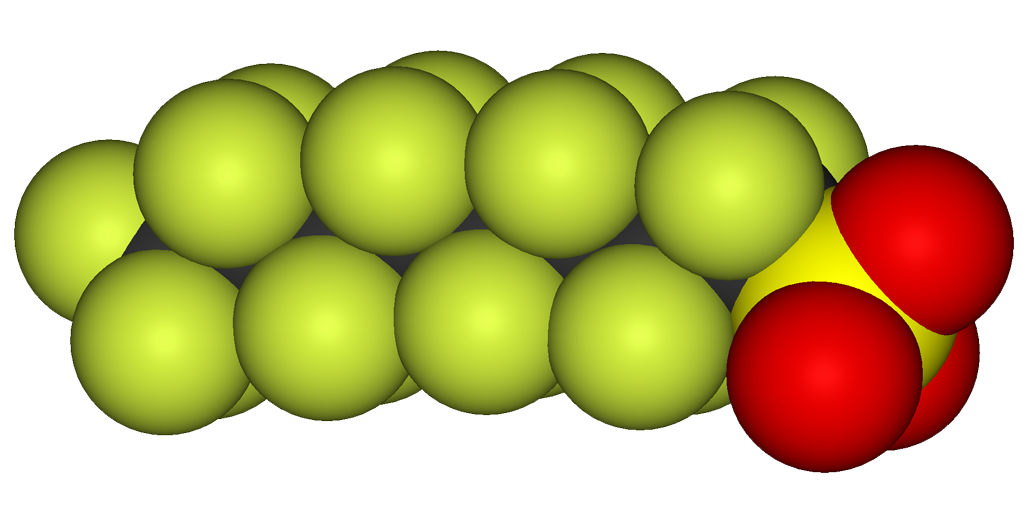
Photo from https://en.wikipedia.org
### Characteristics
Due to their **thermal stability** and **amphiphilic** properties, PFAS have been widely used since the 1960s in **numerous industrial processes** for lubricants, polishes, adhesives, pesticides, repellents, paper and textile coatings, personal care products and fire-fighting foaming agents.
The best-known commercial applications are non-stick cookware (**Teflon**) and waterproof and breathable fabrics (**Goretex**).
As a result, PFAS represent an **emerging** class of global environmental pollutants, which can be detected ubiquitously in all environmental matrices and are highly persistent accumulating along the food chain.
Furthermore, in their anionic forms, which are soluble in water, they can migrate from the soil to groundwater and be **transported at a great distance**. PFAS have even been found in the liver of bears from Arctic regions.

Photo by zoosnow from Pixabay
### Human exposure and path through the body
Exposure to PFAS can take place for various processes:
- *Contaminated drinking water*;
- *Food*;
- *Household dust*;
- *Profession*.
The half-life of PFAS is **3.5–7.5 years**, they are able to bind to proteins and can interfere with different **metabolic pathways**.
Distribution in the blood occurs primarily by binding to blood serum proteins, kidneys and liver. The main molecular target of PFAS in mice is alpha receptor activated by peroxisomal proliferators (PPARα), whose isoform in humans is **PPARγ**, an important regulator of lipid metabolism in the liver.
Furthermore, PFAS have been shown to be endocrine disruptors as they can bind to the **α-estrogen** receptor, the thyroid hormone receptor and the **leptin** receptor.

Photo by Karolina Grabowska from Pixabay
### Regulations
Here are the main **European legislative acts** that regulate the presence of PFAS in drinking water:
- *Directive 2006/122*: The first restrictions occur and PFOS is included in Annex XVII;
- *Regulation 1907/2006*: PFOA becomes candidate on the list for Annex XIV for carcinogenic, mutagenic or toxic properties for reproduction, obtaining the IARC36 classification in group 2B. Subsequently PFOA is inserted in Annex XVII;
- *Regulation 757/2010*: PFOS is classified as POP (persistent organic pollutant) according to the Stockholm Convention;
- *Directive 2013/39/EU*: PFOS becomes a priority substance for water analysis.
In 2015, more than 200 scientists signed the **Madrid declaration**, requesting the international community to cooperate to limit the production and use of PFAS and raise concern about the new perfluorinated short chain compounds.
From 2020 PFOA must **no longer be produced or marketed** as a substance as such and, if used for the production of other substances, mixtures or articles, it must not exceed the concentration of 25 ppb (PFOA and salts) and 1000 ppb ( related substance or combination of PFOA-related substances).
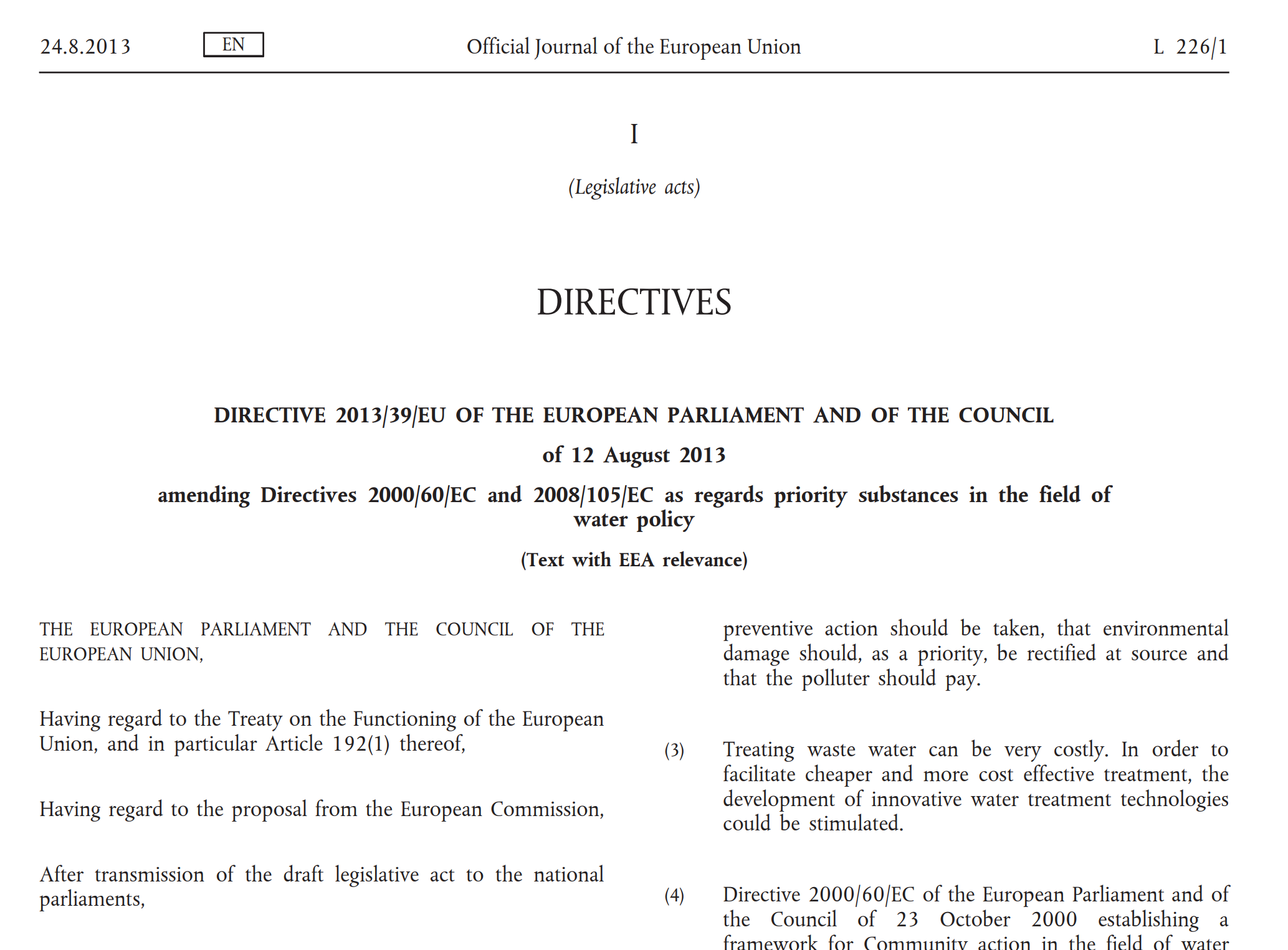
Photo from https://eur-lex.europa.eu
### The U.S. case
The largest study of PFOA blood concentrations and health effects on human communities was conducted in **Virginia**, due to the contamination of the **Ohio River**, which supplies 69,000 people with drinking water.
In particular, statistically relevant associations were found for testicular, kidney, ovaria and prostate **cancer** and non-Hodgkin lymphoma.
In 2000, **3M Company**, the main producer of PFOS, voluntarily initiated a phasing out of PFOS production which was to be completed by 2003. In the same year, a ban on many PFOS applications was introduced in the United States. In 2006, the U.S. **EPA** (Enviromental Protection Agency) invited eight major PFAS industry leaders to participate in a global management program to reduce all PFOA emissions and products and eliminate them by 2015.

Photo by jplenio from Pixabay
### The Italian case
Europe has also hosted an important case of pollution of drinking water from PFAS, particularly in Italy. In fact, in 2013 **ARPAV** (Regional Agency for Environmental Protection and Prevention in the Veneto region) found in its environmental monitoring plans a **great contamination** that spread for 190 km2.
A **production plant** located in the city of Trissino, in Vicenza, **North Italy**, that produced PFAS since the late 1960s has been identified as the only probable source of water contamination.
Measurements of 152 drinking water samples indicated that the main contaminants were PFOA, PFBA and PFBS followed by PFPeA, PFHxA, PFOS, PFHpA and PFHxS. Longer chain PFASs were detected only in a minority of samples and at lower concentrations.
Between July and August 2013, the water treatment plants were equipped with **granular activated carbon filters**, which led to a sharp reduction in the concentrations of PFAS in drinking water distributed by public aqueducts and the effectiveness of the treatment of water has continued to improve over the years.
After reporting by ARPAV, the Italian government asked the SSN (Italian ational health system) to define the **maximum levels of PFAS in drinking water** in order to **protect people** from health risks.
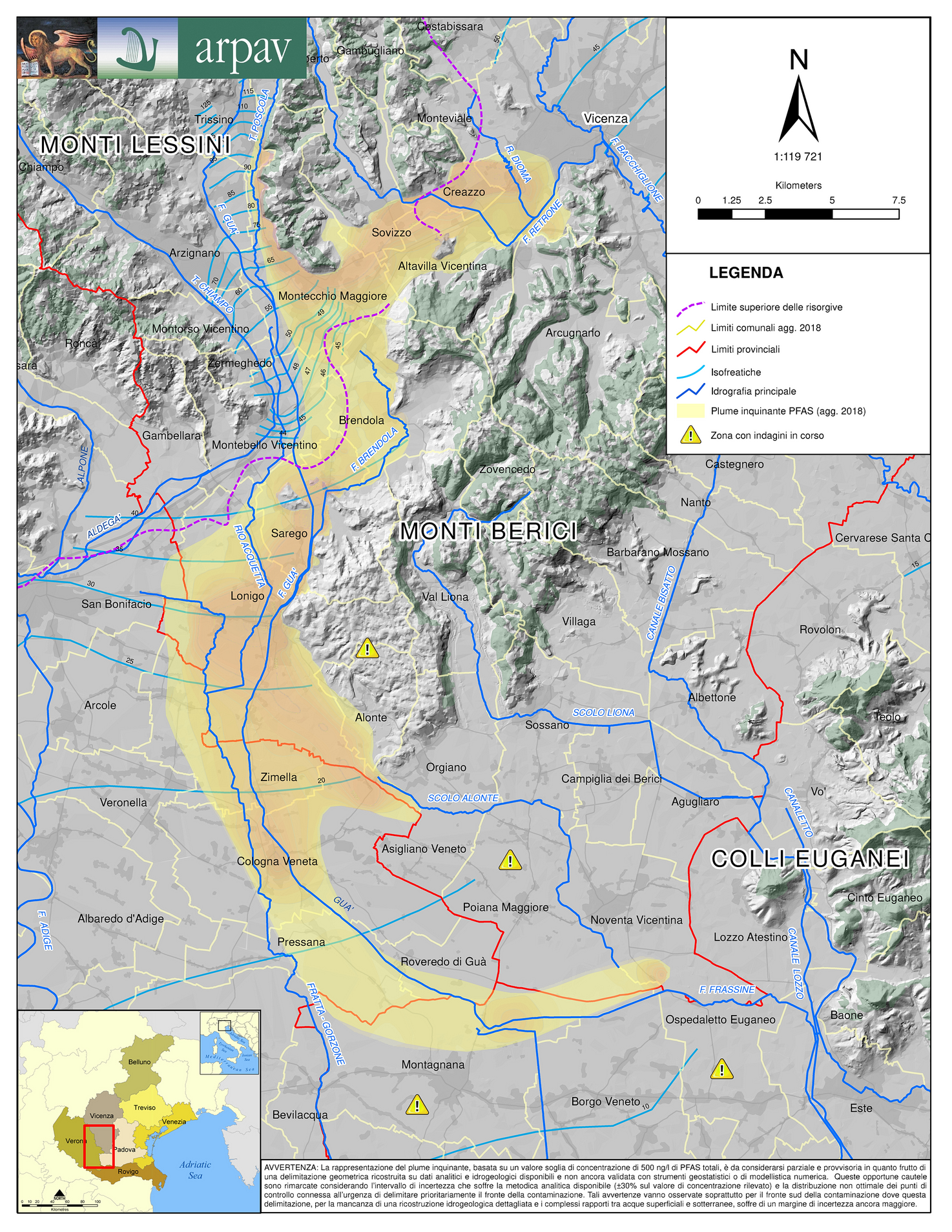
Photo from https://www.arpa.veneto.it/
### Study on mortality
In the first study that I present to you [1], the **causes of death** have been studied in relation to **two topographical areas** in the period 1980-2013:
- *Contaminated*: comprising 24 municipalities, with a resident population of 143,605 inhabitants (74,599 males and 69,006 females);
- *Uncontaminated area*: comprising 56 municipalities with a resident population of 588,012 inhabitants (302,425 males and 285,587 females).
The **results** were truly surprising:
- In *males*, a higher risk was observed for general mortality, diabetes, cerebrovascular disease, myocardial infarction and Alzheimer's disease.
- In *females*, significantly higher relative risk values of 1 were observed for general mortality, renal cell carcinoma, breast cancer, diabetes, cerebrovascular disease, myocardial infarction, Alzheimer's disease and Parkinson's disease.
- In *both sexes*, higher statistically significant relative risks were noted for general mortality, liver cancer, diabetes, cerebrovascular disease, myocardial infarction and Alzheimer's disease. Bladder cancer and leukemia were greater than 1 in both sexes, although not statistically significant.
Like all scientific studies, this too can have **limits** and therefore must be interpreted correctly. The main limitations are two:
- Mortality may not be the *most appropriate indicator* of health outcome because some causes of death related to exposure to PFAS are treatable (eg testicular, prostate and female breast cancer) and others are long-lasting degenerative diseases (eg Parkinson's disease);
- Some of the causes of death considered usually depend on *habits* such as smoking (e.g. kidney cancer, bladder, pancreas, breast cancer) and *socio-economic status*. Nonetheless, the influence of these variables could reasonably be excluded in the study. In fact, the municipalities included in the contaminated and non-contaminated areas were characterized by similar socio-economic conditions and no statistically significant difference was found in the percentage of smokers among the respective populations.
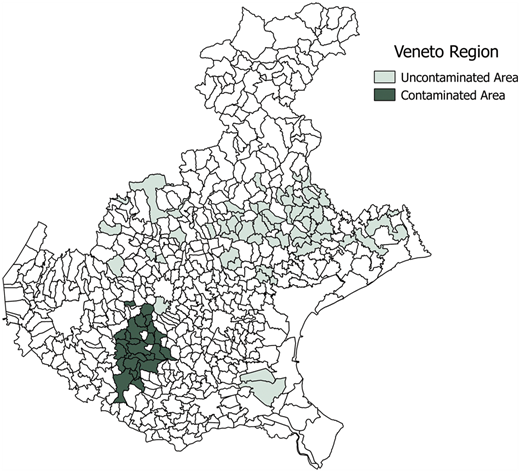
Photo from [1]
### Study on serum levels
The second study [2] aims to analyse the **serum levels** of PFAS in **adolescents and young adults** exposed to contaminated drinking water. The study is based on a **health surveillance program** carried out in the **Veneto Region**.
In fact, to respond to public concerns about exposure to PFAS and in accordance with a **precautionary principle**, since 2017 regional health authorities have established a health surveillance program for Red Area residents to help prevent, diagnose early and in the treatment of some of the chronic ailments with epidemiological evidence.
The initial study population was around 34,000 but was subsequently reduced due to some individuals who decided not to participate in the health surveillance program and others who had been resident for less than 1 year in the Red Area. The final population under study was composed of **18,122 people**.
The surveillance program consists of an **interview** with qualified public health personnel, followed by **blood pressure measurement** and **blood and urine sampling**. The interview investigates residential history, education, employment, eating habits (including the consumption of self-produced food), drinking water and sources intake, smoking habits, alcohol, physical activity, family history and personal illness , medications, reproductive history and BMI.
The results showed that the **main predictive factors for statistically significant elevated serum levels** are:
- *City of residence*;
- *Duration of residence in the area concerned*;
- *Male gender*;
- *Exposure to cigarette smoke* (even if not habitual);
- *Drinking water intake from tap*;
- *Cultivation of self-produced food*.
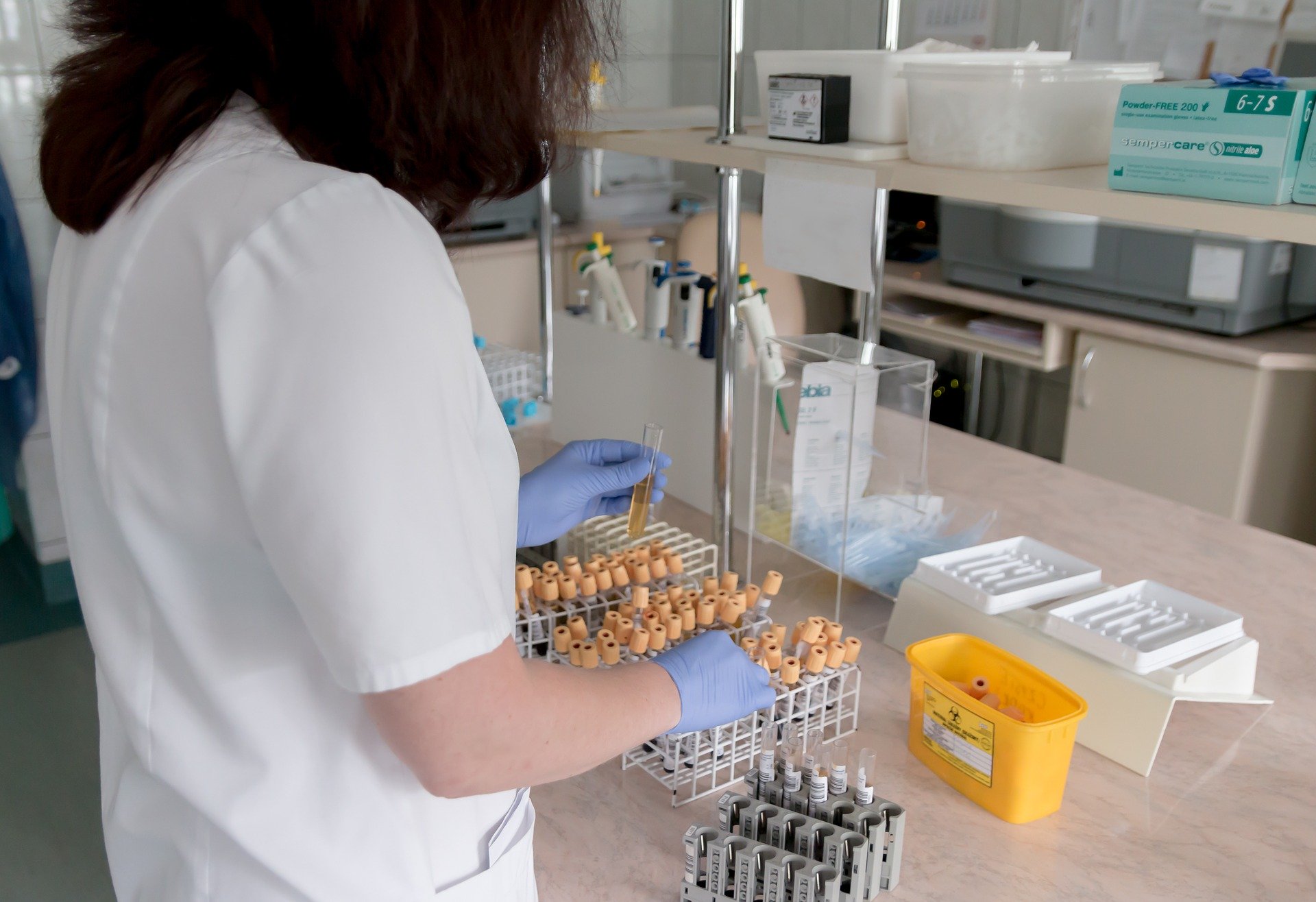
Photo by Michal Jarmoluk from Pixabay
### Study of the effect on fetal growth and births
The third study [3] that I present to you was born from the **concern** about the **potential effects on fetal development** of exposure to PFAS. In fact, these chemical compounds can reach fetus and newborn baby for:
- *Via transplacental*: They are able to cross the placenta;
- *Breastfeeding*: They transfer to maternal blood.
Numerous animal and human studies have been published on the relationships between in utero exposure to PFAS (in particular PFOA and PFOS) and adverse birth outcomes, focusing mainly on fetal growth. In **laboratory animals**, exposure to PFAS, and particularly PFOA, has been shown to be associated with a lower weight of the fetus and puppies. However, animals are exposed to higher doses of PFAS than humans.
For this study, the first problem to be addressed was which **parameter to use** to determine the growth of fetuses and newborns. In fact, numerous other studies have used birth weight or other parameters such as length at birth or head circumference as the main index of fetal growth, even if their interpretations are not simple. In contrast, the **Small-for-Gestational-Age** (SGA), which considers infants smaller than normal for their gestational age, is a measure based on weight and gestational age at birth that has only been used in a small number of studies. SGA is a strong predictor of short- and long-term morbidity and mortality. Severe SGA (< 3rd percentile) represents a greater risk of unfavorable outcomes compared to moderate SGA (3rd to < 10th percentile).
The studied population, therefore, was composed of all live births registered in the Veneto Region **between 01/01/2003 and 31/12/2018**, giving importance to several variables:
- *Socio-demographic characteristics of the mother*, such as age, marital status, educational level and nationality;
- *Obstetric history and adverse outcomes in previous pregnancies*;
- *Smoking habit* during pregnancy;
- ..
**Numerous data were collected** and the results showed that mothers in the contaminated area were more likely to:
- Being younger: 37% of them are 29 years old or less than 29 years old against 31.1% of women in the control area;
- Coming from a foreign country (in particular from North Africa);
- Don't be married;
- Have a lower level of education (34.9% against 27.9%);
- Not having a job (9.7% versus 7.4%).
Regarding obstetric history, women in the contaminated area were less likely to be primiparous (47.1% vs 49%) and were less likely to have suffered from adverse outcomes (22.1% vs 23.6%).
The incidence of **severe SGA** in infants was **3.44%** in the contaminated area and **2.67%** in the control area. Hence, we can conclude that **living in the contaminated area has significantly increased the chances of severe SGA**.
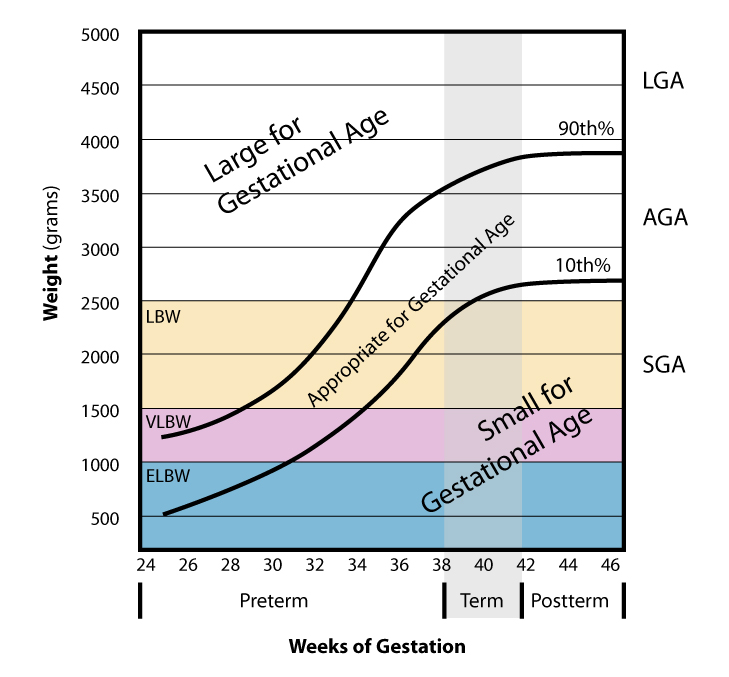
Photo from https://en.wikipedia.org/wiki/Small_for_gestational_age
### Conclusion and reflexion
We can understand how the pollution of water by perfluoroalkyl substances and other persistent chemical compounds is a **very important topic for human health** and for the **well-being of the environment**. The government and international environmental monitoring institutions have a great responsibility on their shoulders!
I am very interested in this topic because the Italian region I mentioned in this post is **my birth region**. Moreover, I love the branch of **analytical chemistry** that deals with environmental contamination and I am happy to do my part in sharing this important information.
Let me know if you liked this post. Thanks for reading!
See you next time,
*Delilha*
---
Ciao a tutti,
Oggi vi introduco un argomento a cui tengo molto: la **contaminazione delle acque potabili**, in modo particolare ponendo l’attenzione su alcuni composti che sono stati oggetto di gravi problematiche sanitarie, le **sostanze perfluoroalchiliche**, PFAS.
Prima di tutto vedremo cosa sono, qual è la regolamentazione europea che ne regola le concentrazioni nelle acque potabili, alcuni casi eclatanti (1 americano e 1 europeo) e, infine, riporterò tre studi che ne hanno valutato l’impatto sulla salute dell’uomo.
Prima di iniziare, consiglio di leggere anche il [mio precedente post](https://peakd.com/hive-193212/@delilhavores/monitoring-of-water-and-its-pollutants-il-monitoraggio-dell-acqua-e-dei-suoi-inquinanti) sull’introduzione all’inquinamento delle acque potabili!

Foto di Mariusz Prusaczyk da Pixabay
### Cosa sono gli PFAS
Le sostanze perfluoroalchiliche (PFAS) sono un gruppo eterogeneo di **sostanze chimiche artificiali altamente stabili**, composto da una **catena di carbonio fluorurata** di varie lunghezze (generalmente C4-C14) con un **gruppo funzionale idrofilo** all'estremità.
Gli PFAS più comuni sono l'**acido perfluoroottanoico** (PFOA) e l’**acido perfluoroottano solfonico** (PFOS), entrambi costituiti da otto carboni con, rispettivamente, un gruppo funzionale acido carbossilico o solfonico ad una estremità.
Il legame carbonio-fluoro rende queste molecole particolarmente **resistenti** all’idrolisi, alla fotolisi, termolisi e alla degradazione microbica e quindi particolarmente **persistenti** nell’ambiente nonché ottimi repellenti per acqua, polvere e oli.

Foto da https://en.wikipedia.org
### Caratteristiche
A causa della loro **stabilità termica** e proprietà **anfifiliche**, gli PFAS sono stati ampiamente utilizzati dagli anni '60 in **numerosi processi industriali** per lubrificanti, lucidanti, adesivi, pesticidi, repellenti, carta e rivestimenti tessili, prodotti per la cura personale e schiumogeni antiincendio.
Le applicazioni commerciali più note sono le pentole antiaderenti (**Teflon**) e i tessuti impermeabili e traspiranti (**Goretex**).
Di conseguenza, gli PFAS rappresentano una classe **emergente** di inquinanti ambientali globali, che possono essere rilevati in modo ubiquitario in tutte le matrici ambientali e sono altamente persistenti accumulandosi lungo la catena alimentare.
Inoltre, nelle loro forme anioniche, che sono solubili in acqua, possono migrare dal suolo alle acque sotterranee ed essere **trasportati a grande distanza**. Sono stati persino rilevati nel fegato degli orsi dalle regioni artiche.

Foto di
#science
#ita
#stemsocial
#nature
#life
#blog
#water
#chemistry
Payout: 0.000 HBD
Votes: 395
More interactions (upvote, reblog, reply) coming soon.